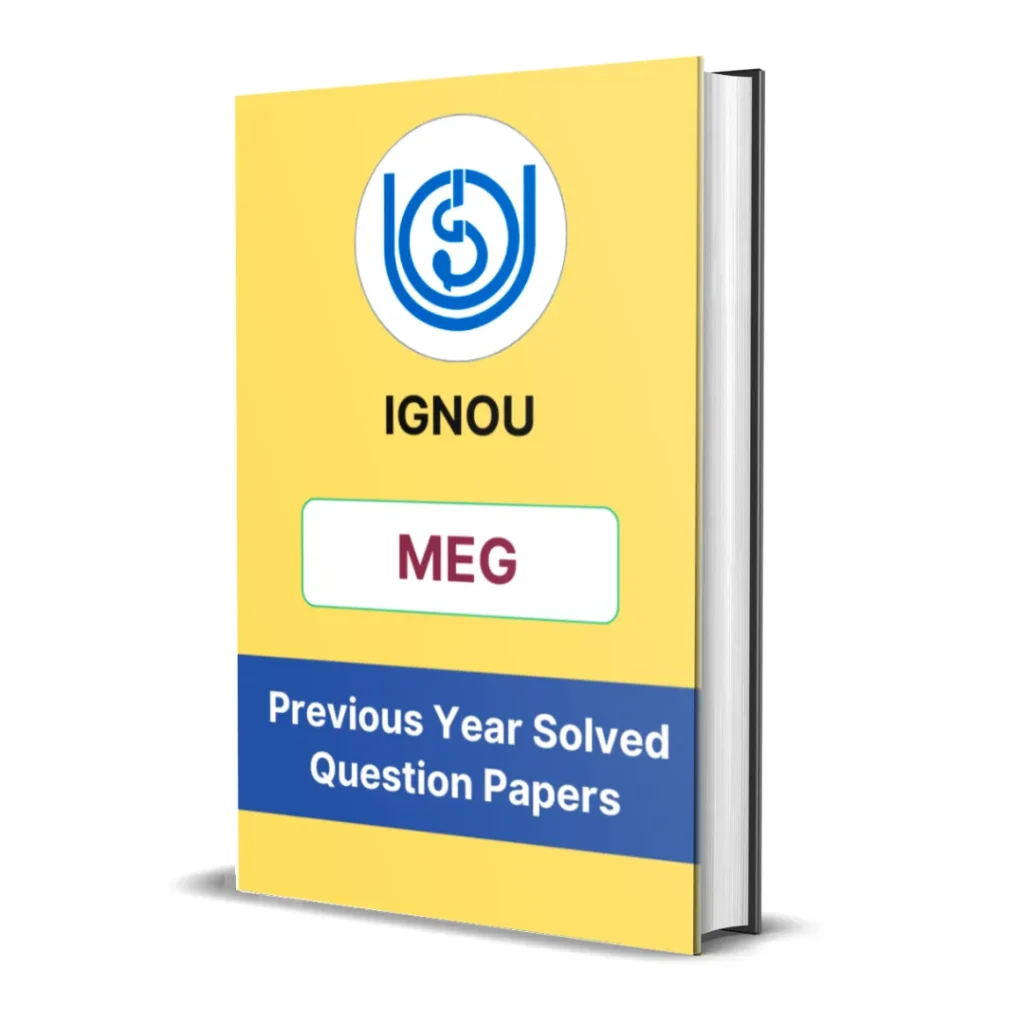MEG 1 Block 1 Summary | Orientation for the Study of Poetry
- Last Updated On August 12, 2025
Table of Contents
Here you will get the detailed summary of IGNOU MEG 1 Block 1 – Orientation for the Study of Poetry & The Medieval Poet Chaucer.
We have provided the summary of all units starting from unit 1 to unit 7.
Unit 1: From the Evaluation of Portraits towards the Explication of Poems
This opening unit introduces the process of interpreting poetry, comparing it initially to the art of evaluating painted portraits. The idea is to encourage students to observe how details—both visual and verbal—convey deeper meanings. The unit teaches that, like a portrait, a poem demands:
-
Close reading
-
Awareness of structure, tone, imagery, and diction
-
Understanding the intentions and background of the poet
The unit shifts from visual art to poetry by building a foundation in critical thinking and textual engagement. It sets the tone for how one should approach literary texts—not just passively read them, but explore and unpack layers of meaning.

Unit 2: A Prelude to the Study of Poetry
This unit lays out the importance and scope of poetry in human experience. It outlines:
-
The distinctive features of poetry compared to prose or drama
-
The role of sound, rhythm, meter, and form
-
How poetry captures emotion, imagination, and insight in a condensed and powerful form
The unit also familiarizes students with basic poetic concepts such as:
-
Lyric, narrative, and dramatic poetry
-
Terms like simile, metaphor, personification, and alliteration
This foundational unit prepares readers for academic poetry analysis by clarifying what makes poetry a unique form of literary expression.

Unit 3: The Age of Chaucer
This unit takes a historical approach by examining the socio-political and cultural backdrop of 14th-century England, the age in which Geoffrey Chaucer wrote. Key features of the era include:
-
The Hundred Years’ War
-
The Black Death
-
The Peasants’ Revolt
-
The dominance of the Church, yet growing voices of individualism and secularism
The age was one of transition—from feudal to modern values. Chaucer’s writing reflects this change, as he blends medieval religious motifs with humanist and realistic concerns, giving voice to common people, women, and marginalized figures.

Unit 4: Chaucer’s Poetry – A General Survey
This unit offers a broad overview of Chaucer’s poetic works, with a special emphasis on his style, innovation, and significance in the development of English literature. Key highlights include:
-
Chaucer’s use of Middle English, establishing it as a literary language
-
Introduction of iambic pentameter and rhymed couplets
-
His realistic portrayal of characters drawn from all levels of medieval society
Major works discussed:
-
The Book of the Duchess
-
Troilus and Criseyde
-
The Canterbury Tales – his masterpiece
The unit emphasizes how Chaucer’s blend of narrative skill, humor, irony, and empathy laid the foundation for later English literature.
Unit 5: The General Prologue to The Canterbury Tales
This unit zooms in on one of Chaucer’s most famous texts, The General Prologue to The Canterbury Tales. The Prologue introduces the fictional frame of the pilgrimage to Canterbury and presents a gallery of characters from different walks of medieval life. Each character is described with vivid detail, often with subtle irony and social commentary. The unit guides students through these portraits—the Knight, the Prioress, the Monk, the Merchant, the Wife of Bath, and others—demonstrating how Chaucer crafts individual personalities while also critiquing social types. The Prologue serves as both a character sketch and a social satire, revealing the values, hypocrisies, and aspirations of Chaucer’s world. Students are also introduced to Chaucer’s narrative voice, which plays with ambiguity and invites readers to form their own judgments. This unit emphasizes the text’s literary richness, its layered irony, and its capacity to humanize a wide range of individuals.
Unit 6: A Study of ‘The Nonnes Preests Tale’ – I
This unit begins a detailed study of one of the tales from The Canterbury Tales—“The Nun’s Priest’s Tale.” It is a beast fable featuring a proud rooster named Chanticleer and his hen, Pertelote. The tale uses animals to mimic and mock human behavior, following the tradition of Aesop and other moral fables. Part I introduces the narrative setup, characters, and themes, emphasizing Chaucer’s skill in elevating a simple fable to a tale rich with mock-heroic grandeur and philosophical undertones. The tale addresses issues such as pride, fate, and the meaning of dreams, blending comedy with moral seriousness. The storytelling style is dynamic, mixing classical allusions with earthy humor, making the tale both entertaining and thought-provoking. Students are encouraged to consider how Chaucer uses the fable form to offer social critique and explore universal truths.

Unit 7: A Study of ‘The Nonnes Preests Tale’ – II
The final unit continues the examination of “The Nun’s Priest’s Tale,” focusing more on its literary techniques and deeper moral implications. It analyzes Chaucer’s use of allegory, rhetorical devices, and structural patterns. The tale, though comic in tone, offers serious reflections on themes like the unreliability of dreams, the dangers of pride and vanity, and the thin line between free will and destiny. The unit also examines the voice of the narrator—the Nun’s Priest—whose ironic detachment and playful seriousness mirror Chaucer’s own narrative strategy. Additionally, the tale’s resolution—where Chanticleer narrowly escapes death due to his wit—leads to a moral that encourages readers to be skeptical, wise, and modest. This unit illustrates how Chaucer blends humor and morality, making his poetry both delightful and instructive.